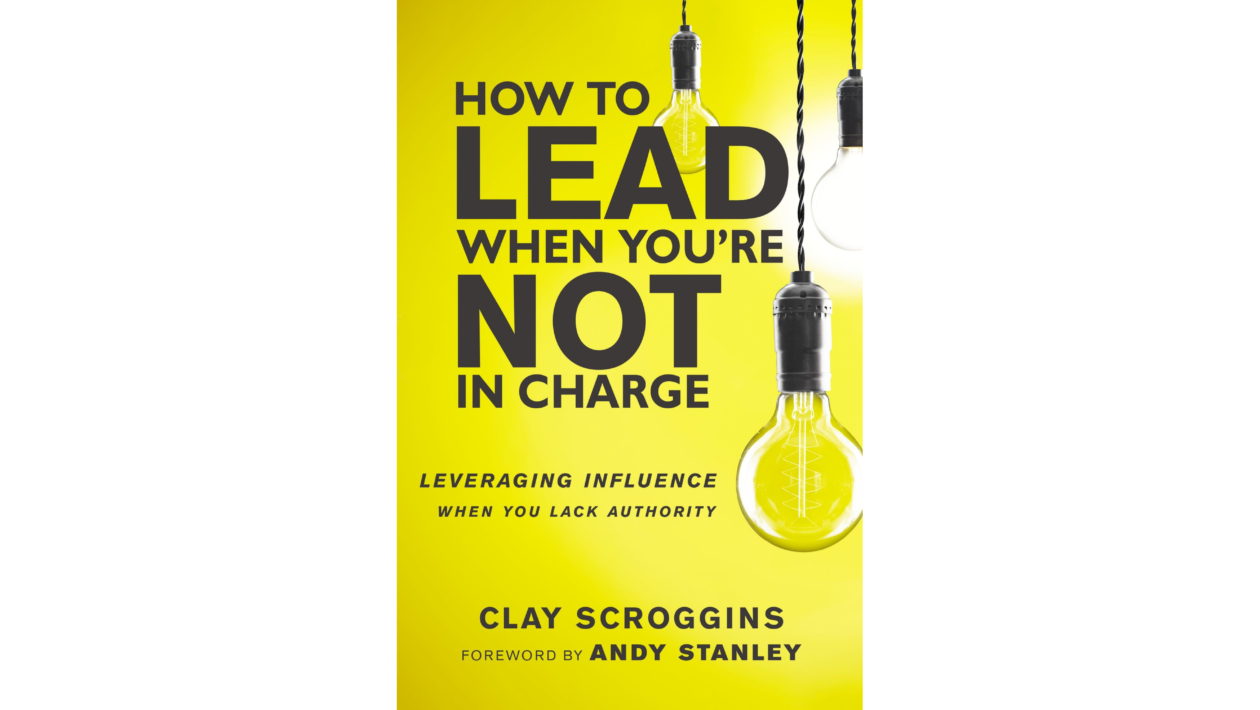By Clay Scroggins
Grand Rapids, MI: Zondervan (2017)
Hardcover, 214 pages; Kindle edition
Reviewed by DANIEL BRAN
In the book How to Lead When You’re Not in Charge: Leveraging Influence When You Lack Authority, Clay Scroggins offers an insightful rendition of the dynamics between authority and leadership. In a clear, easy to follow format, Scroggins addresses the misconception of seeing “positional authority as a prerequisite for effective leadership” (loc. 185). The goal of the book is to help one recognize that when it comes to leadership, “authority is largely irrelevant—if you are a leader, you will lead when you are needed” (loc. 229).
The book is organized into three parts. In the first part, Scroggins addresses the challenge one faces both within the work environment and within oneself. In the second part, he identifies four behaviors that can affect influence and leadership. In the last section, the focus is on how to challenge up, or how to lead within a system of authority constructively and positively.
The mindset of leading without authority can prove to be counterintuitive as “we learn, at an early age, that having the steering wheel is the only way to lead” (loc. 185). It also proves to be freeing for creativity and ownership within one’s area of responsibility as the dynamic of being told what to do can be an inhibitor of thought. This mindset requires a strong sense of self-awareness because “how we see ourselves affects our ability to follow others, our ability to lead others, and our ability to find the future God has for us” (loc. 388). Scroggins identifies five basic components of identity: your past, people, personality, purpose, and priorities, and presents them within a theocentric world view where god’s opinion has the greatest relevance (loc. 598). The author isn’t against authority. His theocentric worldview confirms his proposition that “there isn’t a healthy church or organization that exists for leaders who think they don’t need an authority over them” (loc. 840).
To lead well, one has to be able to lead oneself. This law of personal responsibility identifies that “everyone is responsible for leading something, even if that something is just you” (loc. 1096). This leadership behavior pattern is also interconnected to the way one chooses to look at the world. “How you see your world shapes your world. And you have a say in how you see” (loc. 1429). Choosing positivity, therefore, becomes an essential trait of good leadership and confirms that it is not just a personality trait but also a character trait. It is developed by choice and practiced over time.
Positivity alone, though, is dangerous without critical thinking. Critical thinkers can connect, identify emotions and their cause, be able to understand the nature of the problem and offer practical, well thought out solutions. This kind of leader is known as “value-add” and a problem solver (loc. 2981). Great leaders also reject passivity. They think as an owner and not as an employee. They understand that you don’t have to “be in charge to take charge” (loc. 1991). When they challenge up, they know the difference between challenging the process without necessarily challenging the person. Scroggins’ advice? “The more challenging the conversation, the more private it should be. Challenge privately. Champion publicly. Do not confuse these two! Though they sound similar, very little does more to damage a relationship than confusing them” (loc. 2485).
Influence and not authority is the currency of leadership. Scroggins’ book brings to the leadership community a fresh reminder, especially for those biding their time waiting for a higher position; that the time for leadership is now. If leaders get to lead well when they are in charge, it is because they led that way long before they got there. The influence leaders develop along the way may prove very useful in leading later without the need of pulling out the “gun of authority” (loc. 292).
A pastor by profession, Scroggins uses many biblical references throughout the book to clarify his points and draws great insights and applications to the dynamics of leading within the church environment. The book has a foundational, common sense approach to it which gives it the appearance that it is being directed primarily to those who are newcomers to the workforce. While the religious undertone may be a deterrent for some readers, the book aims to speak to a broader audience, finding its relevance in any ministry or secular work environments where leadership is evidenced, even when one is not “in charge.” It speaks well to the leadership dynamics found within the Christian community, large or small, where the strength of community and social connection play perhaps a more significant role than in the typical corporation culture.
I would recommend this book to anyone wanting to learn how to better leverage influence in their work environment or who could benefit from an inspiring reminder that leadership is far less about formal authority and much more about a mindset that is larger than their work environment. It is for those who are determined to lead like life depends on it. Clay Scroggins believes it does.
Daniel Bran is pastor of the Tryon, North Carolina Seventh-day Adventist Church. He lives in Boiling Springs, South Carolina, USA.

